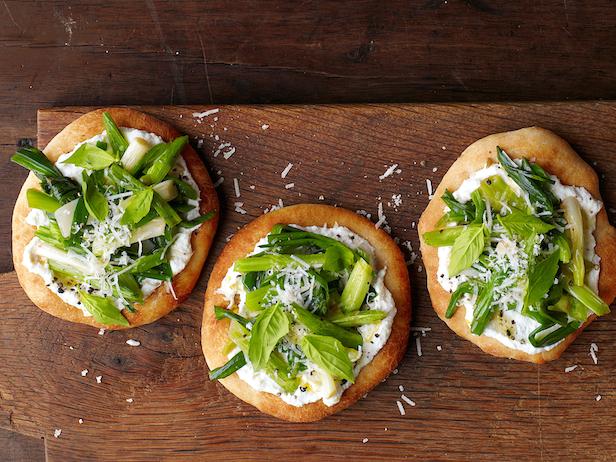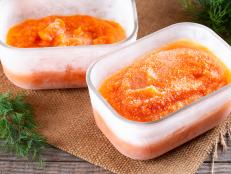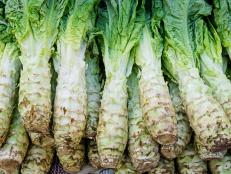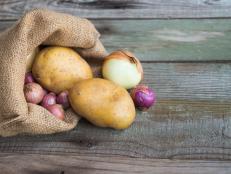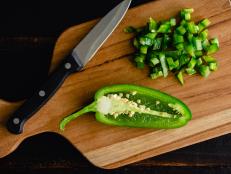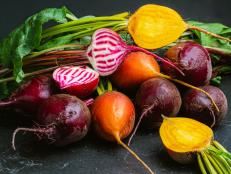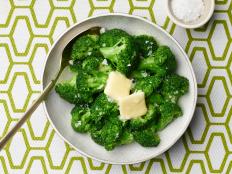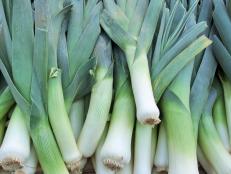What Are Ramps and How Do You Use Them?
Here's how to buy, store and cook with this fleeting spring ingredient.
By Alexis Pisciotta for Food Network Kitchen
Alexis is the the Purchasing and Events Manager at Food Network Kitchen.
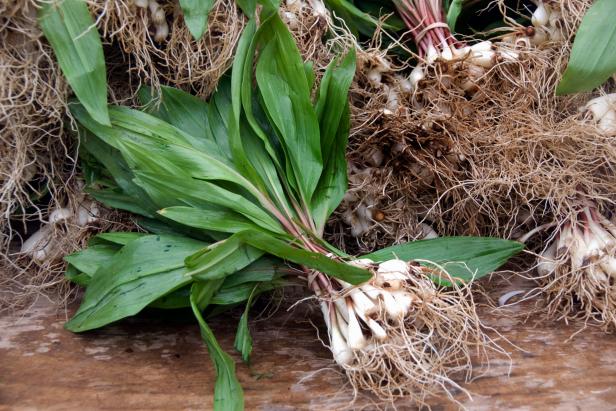
Andrea Sperling/Getty
After a long winter of squash, cabbage and kale, it’s always exciting to welcome the first sign of spring eating, ramps. They are members of the allium family (the same one as onions, shallot, and leeks), and look something like a spring onion at the root-end with an elongated stem and dark green leaves. All but the root is edible. The bulbs are sharp and garlic-like and the leaves milder and grassy.
Though they have become popular in restaurant menus in the last 10 to 20 years, they have been foraged for and eaten across Appalachia for much longer where they grow wild. They’re tricky to cultivate, hard to harvest, and the season is short, (around six weeks) which is why they can be pricey. The rest is easy though, so If you want to get in on the spring magic here’s how to do it.
How to Buy Ramps
Start looking for ramps in farmers markets and specialty produce retailers in late March. They usually come up beginning of April, but since they are wild the weather affects their growing season and sometimes they come unexpectedly early. The southern regions will see them before the north because it’s warmer there sooner.
Ramps are smaller and milder when they are younger, then grow larger and stronger in flavor, as the season progresses. Both are good in their own ways, but you might want to adjust how you use them accordingly. For instance, young whole ramps are good sauteed briefly in oil with a little salt and pepper and eaten as a side dish with eggs or fish, or piled on toast (sometimes smeared with ricotta!). Late in the season I like to blanch the bulbs briefly in water to make them more tender and temper the burn, then pickle them to enjoy for the rest of the year.
How to Store and Clean Ramps
When you buy ramps they might be covered in dirt. It can be hard to get them out of the ground cleanly without damaging them because they grow in rocky soil. Store them like that gently wrapped in a kitchen towel in either a covered container or resealable plastic bag with a little air inside. Wash them right before you are ready to use so they last longer because introducing wetness will make them break down faster.
Wash gently by swishing the ramps in a large bowl of water, letting the dirt drop to the bottom. Do this a few times in clean changes of water to be sure the dirt is all gone, and gently wipe down with a clean lint-free towel. If the green parts are already wet you might want to only submerge the bulbs and wipe down the greens. Cleaned ramps can be stored too, just be sure to dry as much excess water as you can and use them as soon as possible.
Don’t be alarmed if you open your fridge and it smells funky! Ramps have a distinct smell that escapes their storage containers. It can be unpleasant but it isn’t how they taste.
How to Cook With Ramps
You can use ramps in the same way you might use a scallion. Wash, then trim off the root. A common technique is to separate the whites and greens, cook the sharp whites first then add the tender greens at the end. In my family, spaghetti with ramps is a winner. I cook chopped ramp whites (sometimes garlic too depending on the maturity of the ramp) in plenty of extra-virgin olive oil with a pinch of chili flakes, then add spaghetti cooked in well-salted water. I'll add in little of that water, fold in chopped ramp greens, and finish with a salty lemony breadcrumb topping and grated Parmigiano or Pecorino.
Raw ramps make a great pesto for pasta, potatoes, or meats but you could also blanch the ramps for a milder result. They make a delicious kimchi either on their own or mixed with cabbage, and by fermenting them they’ll last a long time. Ramps are wonderful in omelets and savory pancakes (hello sourdough discard!), cooked with crispy potatoes for home-fries or hash, or chopped and added to baked goods like biscuits or scones. My personal favorite is charring them in a cast-iron skillet and topping a burger for a springy twist on a classic.
Here are some recipes to get you started. Don’t be afraid to experiment with your everyday meals. It’s the easiest way to ramp them up into something special.


